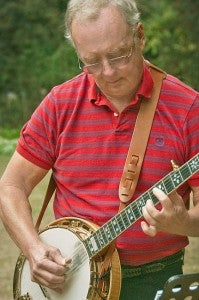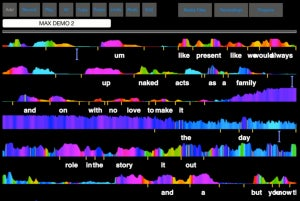For many engineers, winning a technical Oscar would be the pinnacle of their careers — a time for celebrating success and reflecting on a lifetime of achievement. But Andy Moorer, a principal scientist in Adobe Research, has never been one to rest on his laurels.
Andy, more than most, knows what it takes to innovate. He’s been celebrated for it throughout his career. As a computer science student at Stanford University in 1969, he wrote the original software for waveform editing. At a time when audio engineers still edited with razor blades and magnetic tape, the notion of visualizing and editing sound based on its wave form was key to ushering in the era of digital audio. “I wanted to democratize the process of making music,” he says.
In the 1980s Andy joined Lucasfilm DroidWorks where he designed the audio signal processor used in the production of soundtracks for films like Return of the Jedi.
Later, as senior founder and director of advanced development for Sonic Solutions, he developed the original digital signal processing (DSP) platform and algorithms for restoring vintage recordings, used in more than 50,000 albums to date.
For these accomplishments and more, Andy has been recognized with a Lifetime Achievement award from the Audio Engineering Society, an Emmy Award for Technical Achievement, and an Oscar for his pioneering work in the design of digital signal processing and its application to audio editing for film.
Andy’s latest breakthrough in audio technology, Visual Speech Editor, was previewed at Adobe MAX 2014, where he took to the stage as part of the Sneaks program.
“One thing that continues to bug me is the difference between video editing and audio editing. If you show a video clip to a three-year-old, they know exactly what it is. … But if you show them an audio waveform, which is how all audio is edited today, nobody can interpret an audio waveform the first time they see it. … I kept thinking, there has to be a better way.”
Andy showed the audience new visual editing capabilities based on the application of speech recognition and color-mapping of different types of sounds to the audio wave form he pioneered at Stanford. “What I did,” he says, “was use what we know about the characteristics of human speech and I mapped the sound into what we call the color angle (or color wheel).
“Mapping it into the color angle gave me what I wanted, which is that the most extreme sounds you make end up as colors on the opposite side of the color wheel. The things that aren’t speech, show up on the other side of the color wheel, so you get this differentiation between what’s speech and what’s not speech.”
“I wanted to make it as easy as possible. If you look at the apps that are available today for podcasting they either behave like tape recorders — you can turn them on, you can turn them off, you can pause, you can fast forward or rewind. Or, you get a full audio editor with a waveform. There’s nothing that’s in between that’s capable of producing a professional quality broadcast without having to take a course in digital audio editing. This [technology] fits right in that area.”
What’s next? Looking further into the future, and perhaps as a practicing musician himself, Andy hopes to apply the same technology to music editing.
“There’s no doubt in my mind that we can come up with a display, that when you look at it, you instantly know that’s music, not speech and not sound effects; and tells you a little bit about the music — how fast it is, whether it’s big and bassy or screechy, or whether it’s violins.”
One thing’s for sure. With Andy’s dedication and focus, digital audio editing will continue to become more visual, more intuitive and more accessible. For Andy, and for Adobe, the beat of innovation never stops.


